SOME car builders tell excruciating tales about creating their cars. They speak of blown budgets and deadlines, aborted plans, dodgy parts, broken hearts.
But the way Queanbeyan, NSW-based Shaun Sandner tells the putting-together of his caramello-hued Summernats Elite Top 60 Calais, it seems it all just about fell into place. He didn’t even have to look far to find the car: it was his mum’s, bought as an almost-newie back when the VK was the latest and greatest.
“I bought it when I first got my licence – gee, that was more than 10 years ago,” says Shaun. “It was mum’s six-pot shopping trolley but by the time I got it, it was tired: shabby paint and all.”
Crook paint is no problem when the family business is Able Smash Repairs in Queanbeyan, just over the border from Canberra. “I’m a panel-beater and spray-painter by trade, which makes it easy to do stuff like this. I drove it around for about six months on my Ps and I did it up.”
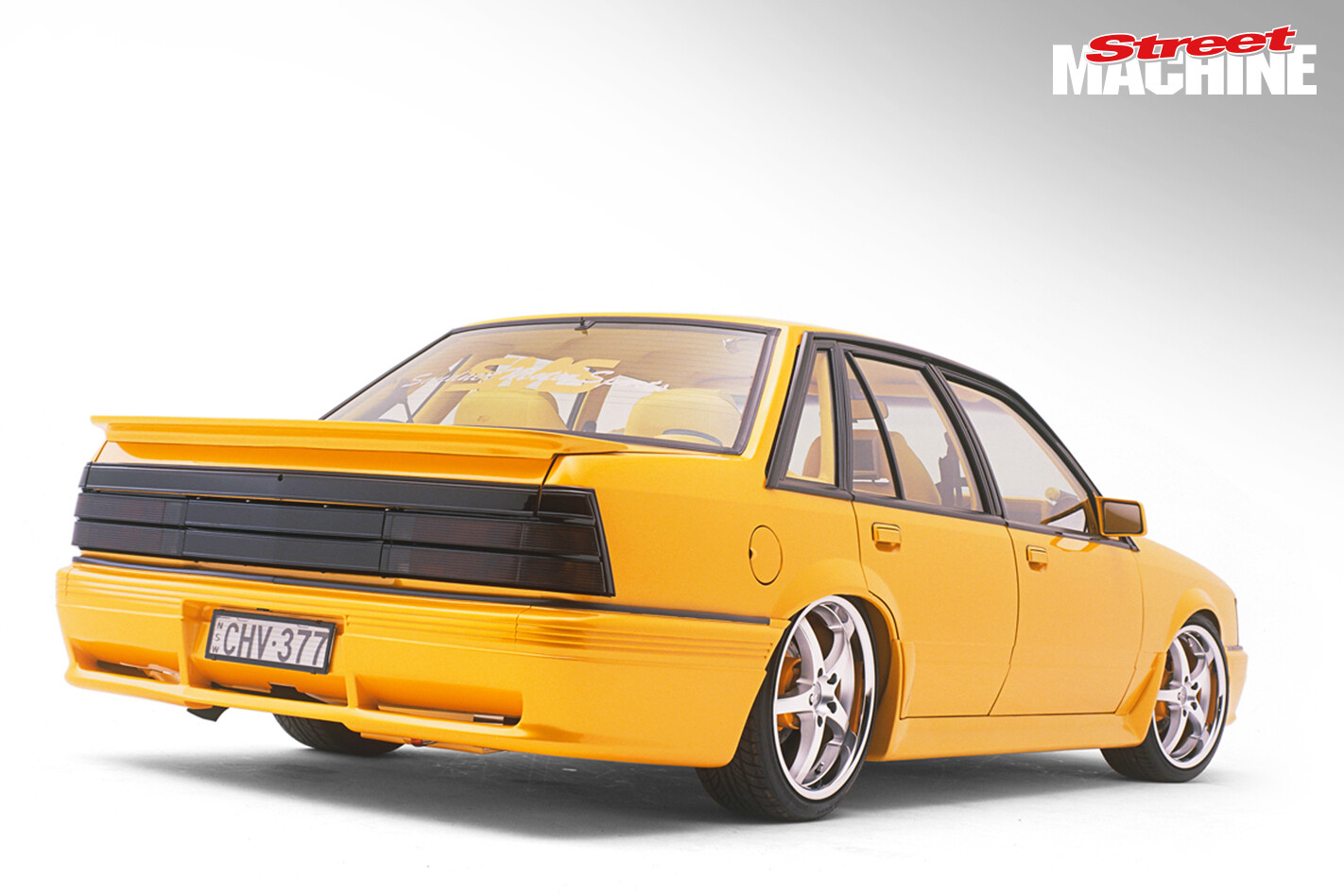
Shaun’s first effort with the welder and spray gun gained him a place in the Summernats Top 80, years ago. “I was quite happy about that,” Shaun reckons. “It was just a light green paint-job and some chrome and detailing in the engine bay.” A Top 80 position is a good start for a young bloke, and it inspired Shaun. He’s been asked twice since then to display the Holden in the Meguiar’s Elite Hall. He took up the offer and, with a rehash of the green paint and panels, and with the 3.3-litre six giving way to a V8 Chev, he walked away with the trophy for Top Sedan.
But a Chev? That flies in the face of convention in these days of simple drop-in, wire-up and fire-up Holden EFI transplants. And that’s the reason Shaun wanted a Chev: “Every man and his dog has a normal V8 Commodore. One idea I had was to retain the six and put a blower on it, but a lot of people around me said ‘go Chev, go Chev’, so I thought, okay.”
The engine in the car now was built by Russell Stenhouse of Racecraft Specialties, a local engine builder with a background in hillclimbs and circuit competition. It’s based on a rare 1972 factory four-bolt 400 block and uses a Crankshaft Rebuilders 3.8-inch crank, six-inch Manley rods and JE dished pistons. Compression under the AFR angle-plug alloy heads is around 10.5:1, making it PULP-capable for street use. The carby is an 830cfm annular discharge Holley over a Victor Jnr intake.
“Shaun’s previous engine (377 cubes, hence the plates) was revvy but this one is more of a torque monster,” says Russell. “It’ll light it up in third gear! Peak torque is around four-six or four-seven and peak power is about 600hp at 6800 revs. It’s a fairly stiff roller cam – a Crower – but it’s easy on the valvetrain.” There’s a set of Yella Terra rockers slotted in there too, as well as plenty of other brand-name bits. The exhaust is a set of hand-made 1¾-inch tri-Y pipes with a three-inch system. Aussie Desert Coolers supplied the radiator.
The driveline includes a TH350 three-speed feeding a spooled nine-inch from a one-piece tailshaft, and upgraded brakes. The fronts are replacement slotted DBAs for a VL turbo, with VT twin-piston calipers. The rears are also DBA slotted.
The car’s most recent change involved a strip and rebuild from treads to turret. It soaked up 12 months of after-hours and weekend work, at the shop and at home in the garage. Shaun did most of it himself.
“That way I know how the job’s been done,” he says. “I think if I did it again, I’d start with another shell. It’s almost a shame to strip a nice paint job.
“The colour is a custom yellow we made up, with a gold pearl over it,” Shaun says of the finish he and big brother Jason applied. “We used Sikkens stuff. The door locks have been smoothed, and that’s about it apart from the HDT-style bodykit. I gave special attention to the panel gaps – they can be quite wavy on Commodores. The most difficult part was getting all the underneath shit off years ago; the rest of it was just filling holes and smoothing things.”
The car passes the 50-metre test but the interior is better. Smooth, painted dash and interior plastics take pride of place.
“The interior is painted from the factory,” says Shaun, explaining how Holden coloured its interior plastics in 1985. “All I did was sand it back, put on a couple of coats of primer and rub it down again before the colour. It gets rid of the grain.”
All four seats are from a Nissan 300ZX; the fronts retain their original electrics. Fitting them wasn’t as difficult as Shaun first expected.
“There was a little bit of mucking around with the runners,” he explains. “The rear seats sit on a frame that’s is bolted to the floor, and we modified the runners to fit the front so it would suit the Commodore bolt pattern.
“We found the interior colour on a sample board,” Shaun says. That’s surprising to hear, as the bright hue looks like a one-off special. “We had a plan but some of it was changed along the way. Like the black for instance: we thought we’d add some black to break it up. We added a few ideas like that as we went along.”
‘We’ includes Matt and Peter at Queanbeyan’s Prestige Plus Upholstery (02 6232 9911) who helped for more than two months. This interior, with many standard components complemented by well-crafted custom parts for door trims and centre console, is far greater than the sum of its modest parts.
Another highlight in Shaun’s car is the original instrument cluster. Fluoro dashes were the cool gadget in luxo cars in 1984 but being a reliability nightmare, they were gone from new cars by ’88.
“I’ve had absolutely no trouble with it,” says Shaun of his Calais’s green and red display. “Not once. I’ve had it in and out a few times and bumped it around but it hasn’t stuffed up. Jeez, I must be lucky!”
Oddly enough, despite its street-like status, road registration was low on Shaun’s wish list “but I thought I’d give it a shot and get it engineered. It was a piece of cake, really.”
But Shaun and wife Aneca don’t drive it much. At least, not yet. “I want to show it for a year or so and then use it as a cruiser. It’s fun but winning trophies doesn’t bring back your money!”
A slice of Chev,n
CHEV-powered Holdens were bread ’n’ butter street machines during the 1980s but the last time I wrote about a Chev-powered Commodore (no, not the Gen III) was in 1996.
It was a Queensland-built VK with an injected 305TPI slotted under the bonnet. Why aren’t there more? The biggest factor is that it’s not as quick or easy as a Holden EFI V8 transplant.
The Chev is built for US left-hand-drives, so its block is staggered with the left-hand bank leading, and the starter motor on the right-hand side. That leaves little room for RHD steering. But it can be done — Castlemaine Rod Shop offers kits and advice.
CHEV TECH
Shaun Sandner
1985 VK Holden Commodore
Colour: Sikkens custom yellow pearl
GRUNT
Engine: Chev small-block
Capacity: 414ci
Heads: AFR alloy
Pistons: JE
Conrods: Manley
Crank: Crankshaft Rebuilders
Cam: Crower roller
Manifold: Victor Jnr
Carb: 830 Holley
Ignition: MSD
Exhaust: Handmade tri-Ys; three-inch exhaust
SHIFT ’N’ STOP
Gearbox: TH350 three-speed auto
Diff: Nine-inch with spool, 3.25:1
Suspension: King springs; Bilstein dampers; Nolathane bushes; Brakes: VL turbo slotted discs; VT calipers; slotted rear discs
INSIDE
Seats: Nissan 300ZX
Gauges: VK Calais plus Auto Meter
Wheel: Momo
Sound: Alpine head unit with Audiobahn amps, Kicker CVR subs, Boston Acoustics and AVI speakers
ROLLING
Rims: 18×8-inch Koya
Rubber: 235/45 Falkens
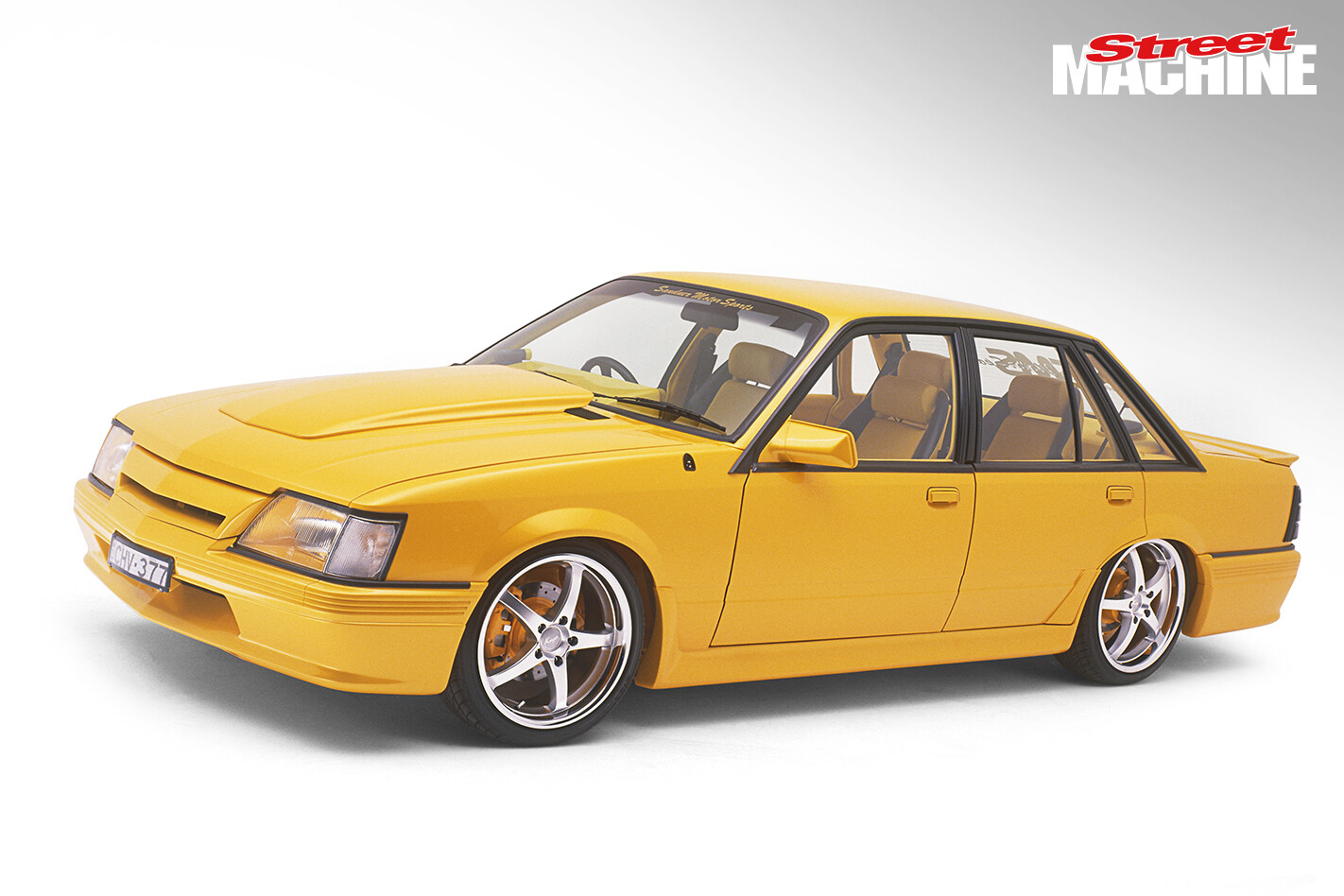
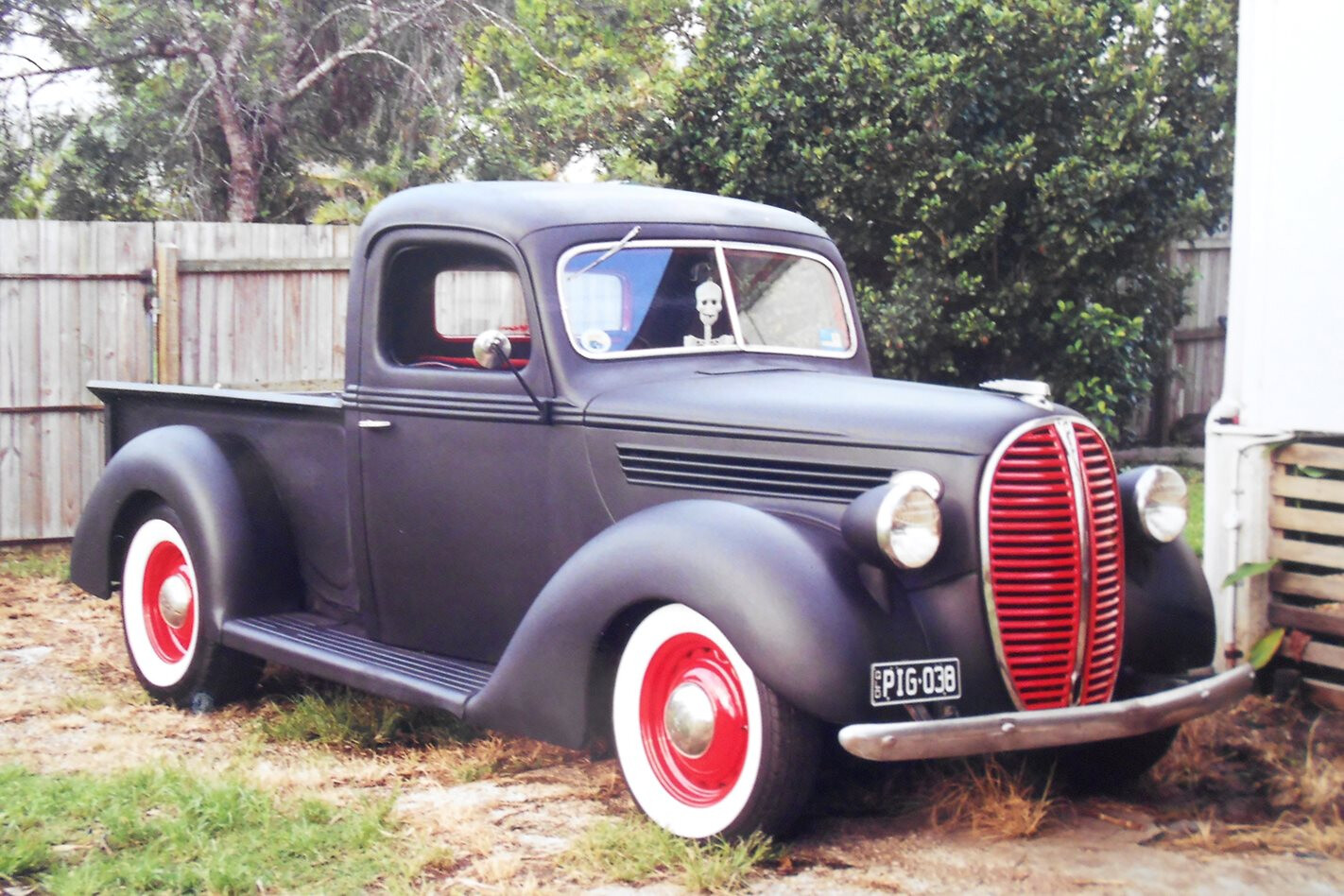
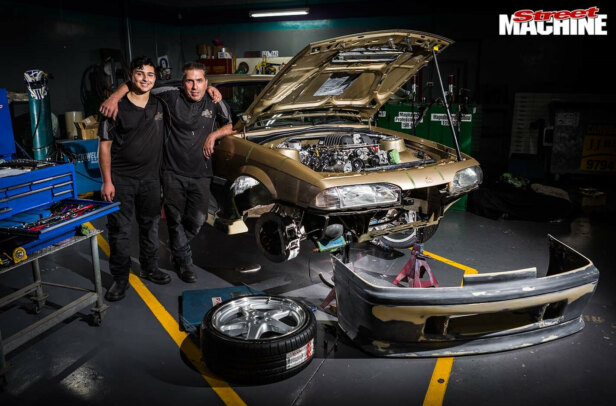
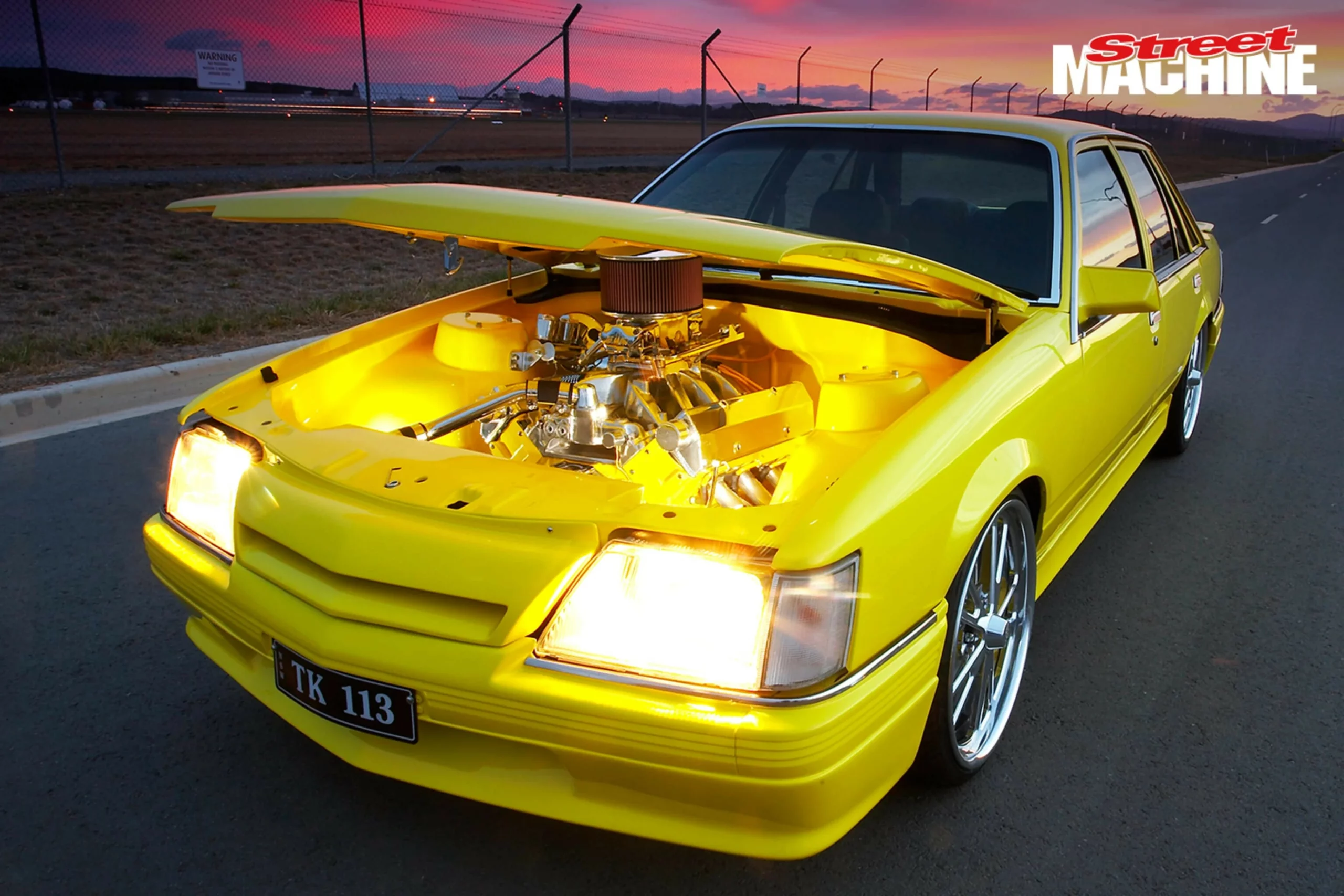
Comments